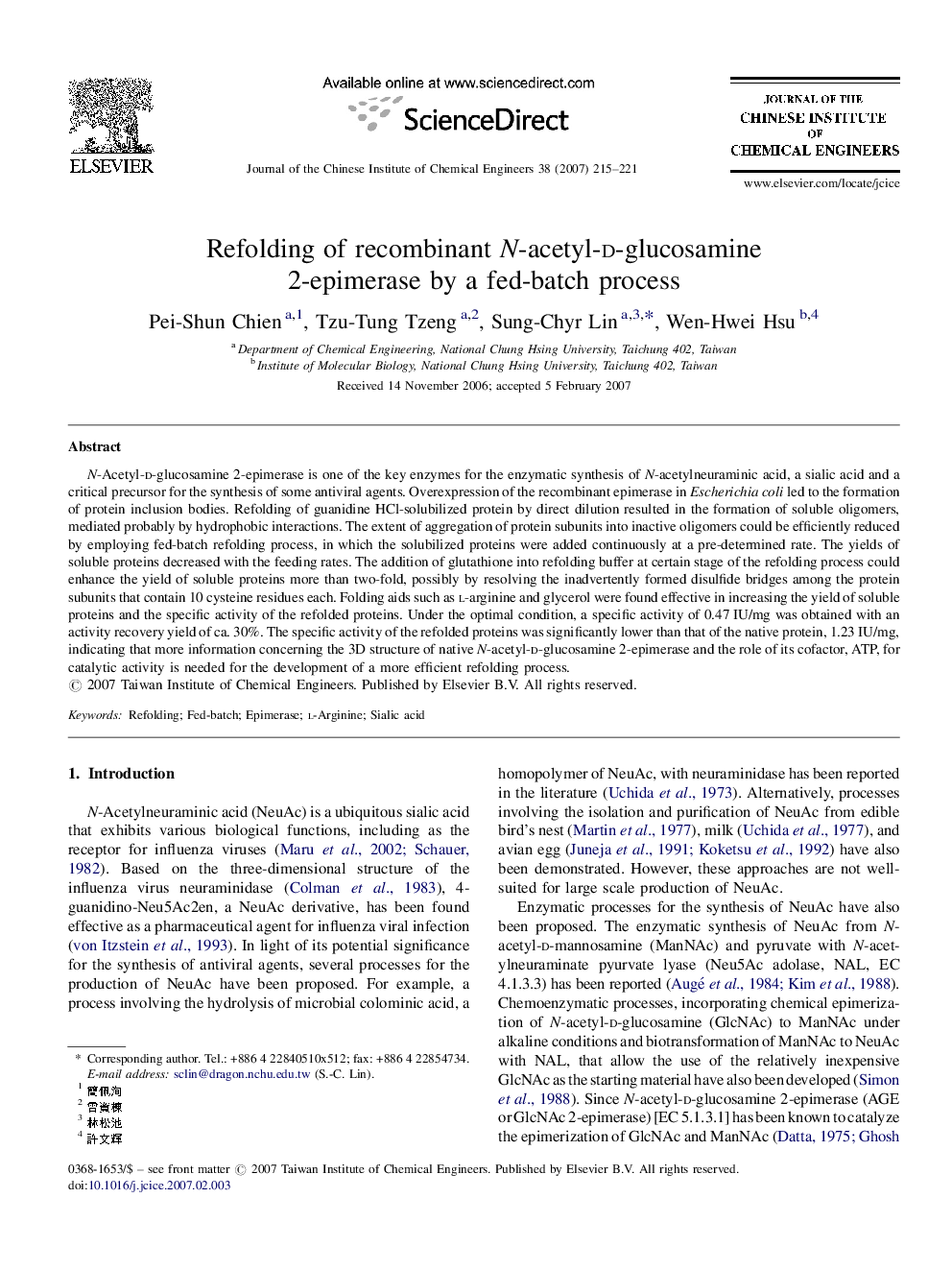| Article ID | Journal | Published Year | Pages | File Type |
|---|---|---|---|---|
| 217702 | Journal of the Chinese Institute of Chemical Engineers | 2007 | 7 Pages |
N-Acetyl-d-glucosamine 2-epimerase is one of the key enzymes for the enzymatic synthesis of N-acetylneuraminic acid, a sialic acid and a critical precursor for the synthesis of some antiviral agents. Overexpression of the recombinant epimerase in Escherichia coli led to the formation of protein inclusion bodies. Refolding of guanidine HCl-solubilized protein by direct dilution resulted in the formation of soluble oligomers, mediated probably by hydrophobic interactions. The extent of aggregation of protein subunits into inactive oligomers could be efficiently reduced by employing fed-batch refolding process, in which the solubilized proteins were added continuously at a pre-determined rate. The yields of soluble proteins decreased with the feeding rates. The addition of glutathione into refolding buffer at certain stage of the refolding process could enhance the yield of soluble proteins more than two-fold, possibly by resolving the inadvertently formed disulfide bridges among the protein subunits that contain 10 cysteine residues each. Folding aids such as l-arginine and glycerol were found effective in increasing the yield of soluble proteins and the specific activity of the refolded proteins. Under the optimal condition, a specific activity of 0.47 IU/mg was obtained with an activity recovery yield of ca. 30%. The specific activity of the refolded proteins was significantly lower than that of the native protein, 1.23 IU/mg, indicating that more information concerning the 3D structure of native N-acetyl-d-glucosamine 2-epimerase and the role of its cofactor, ATP, for catalytic activity is needed for the development of a more efficient refolding process.
